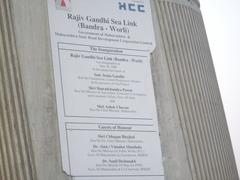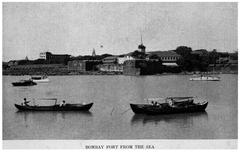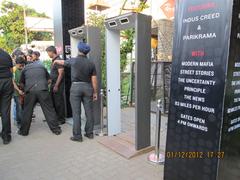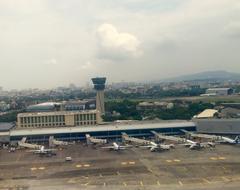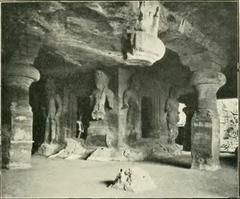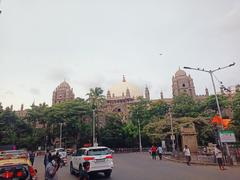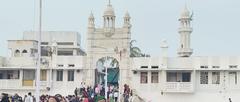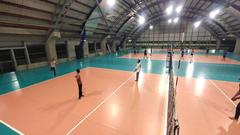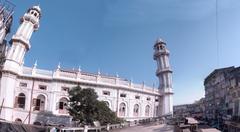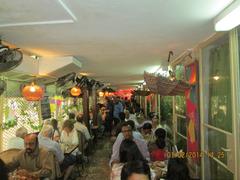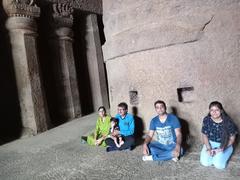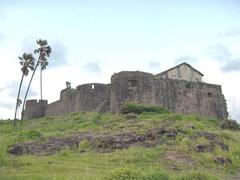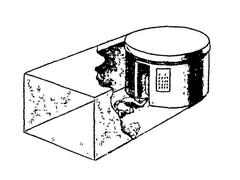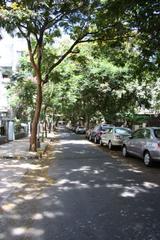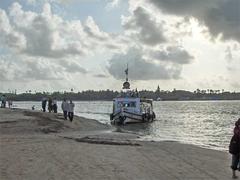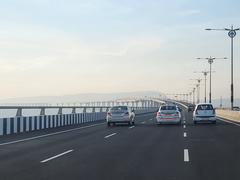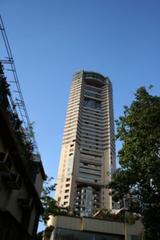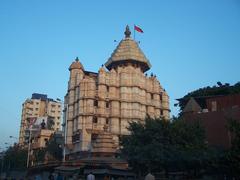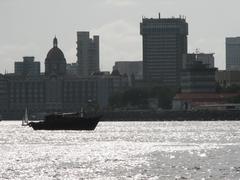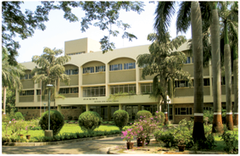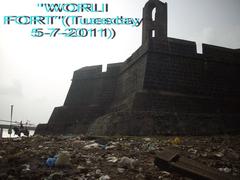Bombay House Mumbai Visiting Hours, Tickets, and Historical Sites Guide
Date: 04/07/2025
Introduction: A Living Monument of Mumbai’s Heritage
Bombay House, the distinguished headquarters of the Tata Group, stands as a testament to Mumbai’s industrial legacy and architectural excellence. Nestled at 24 Homi Mody Street in the heritage-rich Fort district, this iconic building reflects not only the evolution of Mumbai from a colonial port to a modern metropolis but also the pioneering spirit of one of India’s most influential conglomerates. Designed by George Wittet—the architect behind the Gateway of India and Prince of Wales Museum—Bombay House masterfully blends Edwardian neo-classical and Indo-Saracenic styles, using locally sourced Malad stone. Thoughtfully constructed to suit Mumbai’s tropical climate, it features thick walls, high ceilings, and generous ventilation, while ornate details like floral keystones and teakwood interiors evoke a refined colonial ambiance (Architectural Digest; The Design Gesture; Travelogy India).
Beyond its architectural grandeur, Bombay House has been the nerve center of Tata’s groundbreaking ventures—such as Tata Steel, Air India, and Tata Consultancy Services—symbolizing ethical leadership and visionary nation-building. Dubbed the “Temple of Trust,” it has hosted figures like Mother Teresa and Field Marshal Sam Manekshaw, embedding itself in India’s social and economic narrative (Tata Group Official).
While public access is generally restricted due to its role as a corporate headquarters, the Tata Experience Centre (TXC) on the ground floor offers visitors an immersive, interactive journey through the Tata Group’s history. The building’s imposing façade, set amid the vibrant Fort district, is a highlight for architecture lovers, and its proximity to other historical sites—like the Gateway of India and Chhatrapati Shivaji Maharaj Terminus—makes it a must-see stop on any Mumbai heritage itinerary (Magical Mumbai Tours; Mumbai Heritage Walk).
This guide consolidates Bombay House’s historical, architectural, and visitor information, equipping history enthusiasts, architecture buffs, and travelers with everything needed for an enriching experience. For the latest on special tours and events, consult official resources and heritage organizations (Tata.com).
Table of Contents
- Introduction
- Historical Background
- Visitor Information
- The Tata Experience Centre (TXC)
- Amenities and Facilities
- Nearby Attractions
- Frequently Asked Questions (FAQ)
- Conclusion and Travel Recommendations
- References
Historical Background
Origins and Construction
Bombay House was conceived in the early 1920s when the Tata Group, led by Sir Dorabji Tata, identified the need for a consolidated headquarters. George Wittet, renowned for shaping Mumbai’s cityscape, was commissioned to design the new building. Completed in 1924, Bombay House has since been the strategic hub for the group’s operations, anchoring its pivotal role in India’s industrialization.
Architectural Style and Features
This four-story heritage structure is an exemplar of Edwardian neo-classical design, distinguished by its channelled rustication, floral keystones, and decorative window moldings. The use of Malad stone, arched windows, and a unique “hung” fourth floor showcase both engineering innovation and aesthetic refinement. Inside, original teakwood furniture, French chandeliers, and period clocks have been preserved, creating a timeless colonial ambiance (The Design Gesture).
Role in Tata Group’s Evolution
Bombay House has been the birthplace of landmark initiatives—such as India’s first steel plant (Tata Steel), the national airline (Air India), and the country’s first major IT services provider (TCS). These milestones have cemented Tata’s influence on Indian industry and global business.
Cultural and Social Significance
The building’s moniker, the “Temple of Trust,” reflects its status as a symbol of ethical business and public service. It has welcomed dignitaries and visionaries, playing a vital role in shaping the nation’s social and economic fabric.
Renovation and Sustainability
A major restoration in 2017–2018 led to modern workspaces and advanced technology while respecting the building’s heritage. Bombay House became the first heritage structure in India to receive gold and platinum ratings from the Indian Green Building Council for its sustainability practices (Tata.com).
Visitor Information
Visiting Hours
- General Access: Exterior viewing is possible at any time.
- Tata Experience Centre (TXC): Open weekdays, typically 10:00 AM–5:00 PM. Hours may vary during special events; always confirm via the Tata Group’s official website.
Tickets and Entry
- TXC Admission: Free of charge. Advance registration may be required during busy periods or special events.
- Main Office Areas: Not accessible to the public.
Accessibility
- Transport: Accessible via Mumbai’s local trains—nearest stations are Chhatrapati Shivaji Maharaj Terminus (CSMT) and Churchgate (10–15 minutes’ walk). Public buses and taxis are readily available.
- Physical Access: The exterior is easily accessible. The TXC and public areas on the ground floor are wheelchair-friendly, with ramps and elevators. Interior access to upper floors is restricted.
Travel Tips
- Dress Code: Smart casual attire is encouraged.
- Security: Carry a valid photo ID; all visitors undergo a security screening.
- Photography: Permitted in the TXC and public areas but restricted elsewhere.
- Timing: Weekdays during business hours are best; avoid public holidays and weekends.
The Tata Experience Centre (TXC)
The TXC is a digital museum and the sole area open to the general public. It offers:
- Interactive Exhibits: Explore Tata’s history, innovations, and social initiatives through touchscreens, archives, and multimedia displays.
- Self-Guided Tours: Staff are available for assistance; typical visits last 45–60 minutes.
- Accessibility: Fully wheelchair accessible.
- Registration: Entry may require advance booking, especially for groups or during peak times (Architectural Digest).
Amenities and Facilities
- Coffee Lounge: Includes a Starbucks outlet for refreshments and informal meetings.
- Restrooms & Wi-Fi: Available in public areas.
- Canine Kennel: A unique feature that reflects the Tata Group’s compassion for stray dogs, cared for by staff for decades.
- Safety: Modern security and fire safety systems are in place.
Nearby Attractions
Bombay House’s central location in the Fort district means it is surrounded by notable heritage sites:
- Gateway of India: Iconic waterfront monument.
- Chhatrapati Shivaji Maharaj Vastu Sangrahalaya: Mumbai’s premier museum.
- Kala Ghoda Arts District: Renowned for galleries and public art.
- Horniman Circle Gardens: Ideal for relaxation and photography.
- University of Mumbai & Bombay High Court: Architectural landmarks nearby (Laure Wanders).
Combine your visit with a heritage walk to experience the architectural richness of the Fort precinct (Magical Mumbai Tours; Mumbai Heritage Walk).
Frequently Asked Questions (FAQ)
Q: Can I enter Bombay House?
A: The main office is not open to the public; only the ground floor’s Tata Experience Centre is accessible during designated hours.
Q: Are there tickets or fees?
A: Admission to the TXC is free, but registration may be necessary during events.
Q: What are the visiting hours?
A: TXC is open weekdays, 10:00 AM–5:00 PM; verify timings on the Tata Group website.
Q: Is Bombay House wheelchair accessible?
A: Public areas and the TXC are accessible; some heritage limitations may exist.
Q: Are guided tours available?
A: Regular tours are not standard but may be organized during heritage weeks or special occasions.
Q: What else can I explore nearby?
A: The Fort district offers a wealth of colonial-era landmarks and museums within walking distance.
Conclusion and Travel Recommendations
Bombay House is much more than a corporate headquarters—it is a living monument to India’s industrial journey, blending architectural elegance, sustainability, and visionary leadership. While access is limited to the TXC and public areas, the building’s façade and immersive exhibits provide a compelling experience for anyone interested in Mumbai’s heritage.
To maximize your visit:
- Plan ahead by checking visiting hours and registering for the TXC if necessary.
- Explore the Fort district’s many historical attractions.
- Use digital resources, such as the Tata Group website or the Audiala app, for maps, updates, and virtual tours.
- Stay tuned to social media and official announcements for special events or guided heritage walks.
Bombay House’s story is intertwined with the city’s transformation and India’s emergence on the global stage. A visit here is an invitation to witness the intersection of history, architecture, and innovation.
References
- Tata Group Official
- The Design Gesture
- Travelogy India
- Architectural Digest
- Magical Mumbai Tours
- Mumbai Heritage Walk
- Laure Wanders
- Tata Trusts
- Living Nomads
- The Speaking Out Loud
- World History Journal
- Tata.com: Making of New Bombay House
